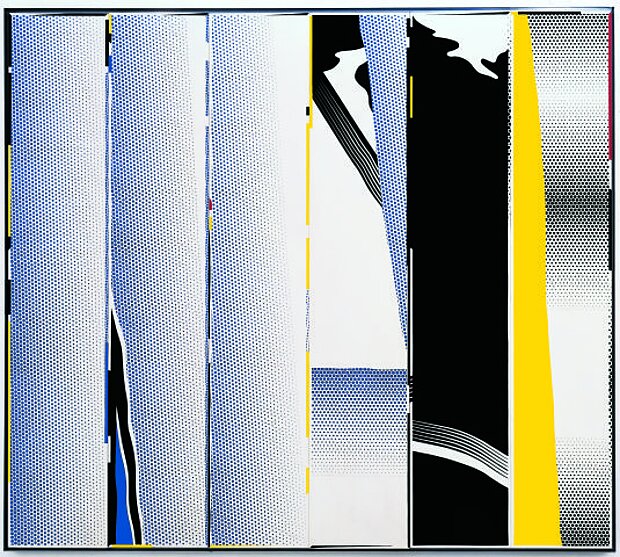
Lichtenstein, Roy
Mirror in Six Panels
1970

© mumok
| Object description | Oil, magna on canvas |
|---|---|
| Object category | painting |
| Material |
Painting layer:
oil paint
Object:
Magna
Support:
canvas
|
| Technique |
Object:
oil paintings
|
| Dimensions |
Frame:
height: 249 cm,
width: 281 cm,
depth: 8 cm
Object:
height: 243,8 cm,
width: 274,3 cm
|
| Year of acquisition | 1991 |
| Inventory number | ÖL-Stg 253/0 |
| Creditline | mumok - Museum moderner Kunst Stiftung Ludwig Wien, Leihgabe der Österreichischen Ludwig-Stiftung |
| Rights reference | Bildrecht, Wien |
| Further information about the person | Lichtenstein, Roy [GND] |
| Literature |
Roy Lichtenstein Hyper Real |
The Mirror Series, which Roy Lichtenstein began in 1969 is his most successful discourse on the relation of reality and illusion in painting. Following his typical approach he fell back to prefabricated material, commercial brochures he had discovered in the shop windows of mirror stores. “My first mirror paintings did not really look like mirrors to people. It took a certain learning process to make them recognizable as mirrors. I was tempted to create very concrete symbols for ephemeral hardly tangible things, from mirror reflections for instance.” Mirror and image are related objects, they both show something which they are not. The mirror additionally does this in an ever changing manner according to each prospective. <k>Mirror in Six Panels<k> pointedly illustrates the absurdity of the reflecting function of the mirror. Instead of reflecting a real object, which had been considered the prime task of painting ever since Renaissance, the mirror painting defies any illusion and is but a game with abstract signs. Through the reduction to opaque flat surfaces of color and screen points differentiating according to size Lichtenstein succeeds in depicting the subtleties of ephemeral’s reflections. The form patterns go back to studio experiments with adjustable revolving mirrors that create radically incoherent visual impressions.
© mumok – museum moderner kunst stiftung ludwig wien